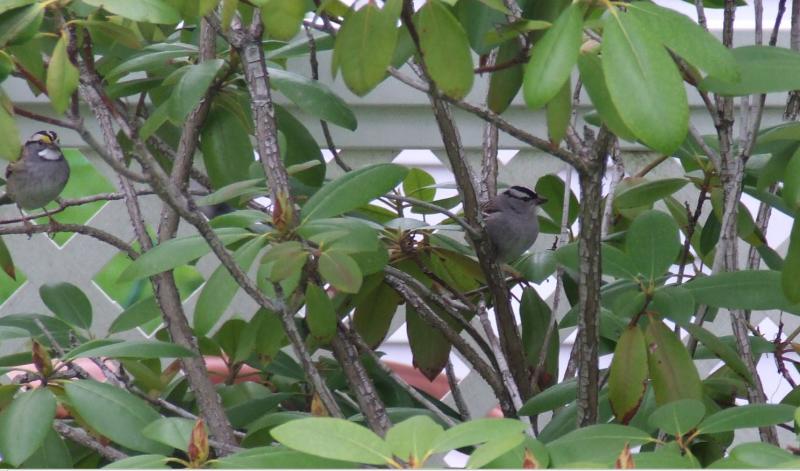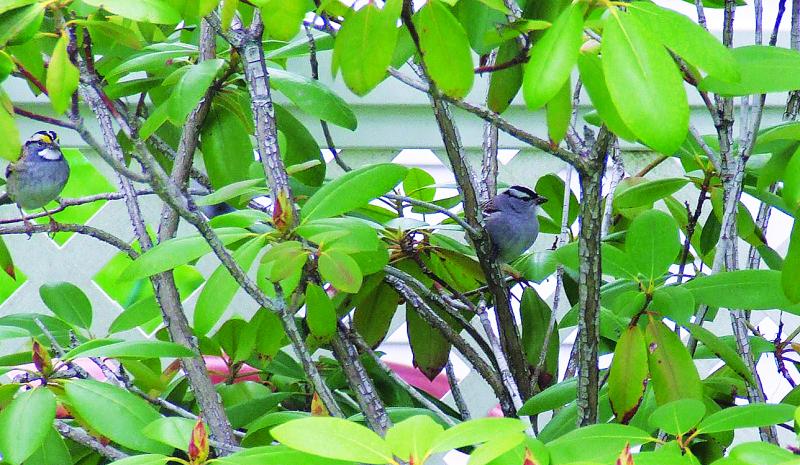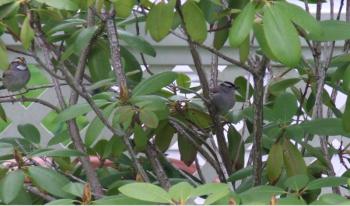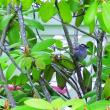Clouds of Fall Sparrows
It’s a sign of fall for those who notice: clouds of small, brownish birds that flush from the roadside along every Maine back road. A discerning eye may notice a flash of white from the tail edges on many of them—dark-eyed juncos. Others may just appear as brown flashes of slightly different sizes and shapes—perhaps white-throated and chipping sparrows, among others—when the flock scatters as the car passes by.
That’s why some birders like to call them the “little brown jobs” of the bird world.
These are the birds we collectively call “the sparrows.”
They are among the last vanguard of the fall migration of the billions of birds that flow south from the Boreal Forest and Arctic biomes of Canada and Alaska to warmer winter climes. The much more colorful warblers also inhabit the northern parts of our continent, but they migrate south in August and September to reach wintering areas in the tropics and subtropics. The sparrows, on the other hand, winter farther north than all but a few warblers, largely in the U.S. and northern Mexico. This difference in wintering areas and in the later migration of sparrows as compared to most warblers is probably because sparrows specialize in eating seeds (and in some species, berries as well) during migration and winter. Warblers are largely insect eaters, so an October-migrating warbler would have difficulty finding enough food to make it south. The exceptions are warblers like the myrtle (yellow-rumped) warblers that eat a lot berries in fall and winter and, probably not coincidentally, also reach their peak migration in October, like the sparrows.
Despite the difficulties in spotting them, sparrows are easily noticed this time of year, not only because they feed in open areas beside roadways, but also because they gather in flocks in migration and winter. It is not uncommon to see flocks numbering in the dozens here in Maine, and in open grasslands of the southern U.S., wintering flocks can contain hundreds of birds. The seeming abundance of sparrows at this time of year is also reflective of their overall continental abundance. The total population of chipping sparrow is thought to be about 210 million birds, the dark-eyed junco (yes, a sparrow despite its name) about 200 million, and the white-throated sparrow about 140 million. Together, the most abundant sparrows that migrate through Maine have a summed-together breeding population of more than a billion. Add the young of the year to that tally and the total could swell to twice that number as the living creatures undertakes their massive southward migration to inhabit their wintering range. It’s no wonder that dark-eyed juncos are one of the most widely reported birds across North America during the Great Backyard Bird Count in February.
The sparrows are, of course, studies in subtle shades of browns, grays, blacks, and white. Sparrows prefer open or shrubby habitats and rely on camouflage to protect them from predators. The next time you flush a flock of sparrows along the roadside that you hadn’t noticed were there, respect the camouflage afforded by the subtle browns of the plumage of the “little brown jobs.”
Jeffrey V. Wells, Ph.D., is a Fellow of the Cornell Lab of Ornithology. Dr. Wells is one of the nation's leading bird experts and conservation biologists and author of “Birder’s Conservation Handbook”. His grandfather, the late John Chase, was a columnist for the Boothbay Register for many years. Allison Childs Wells, formerly of the Cornell Lab of Ornithology, is a senior director at the Natural Resources Council of Maine, a nonprofit membership organization working statewide to protect the nature of Maine. Both are widely published natural history writers and are the authors of the book, “Maine’s Favorite Birds” and the newly published “Birds of Aruba, Bonaire, and Curaçao” from Cornell Press.
Event Date
Address
United States




























